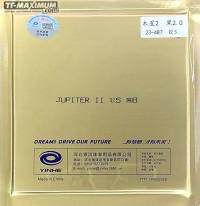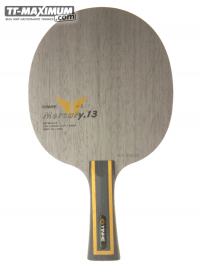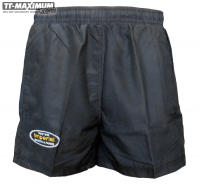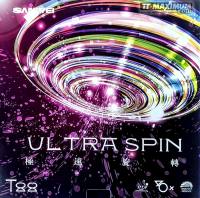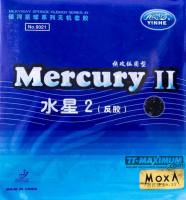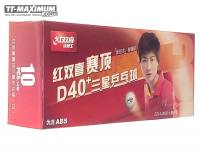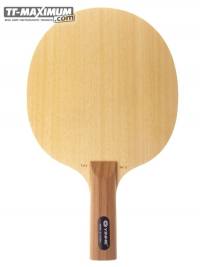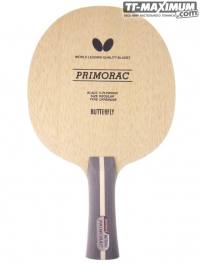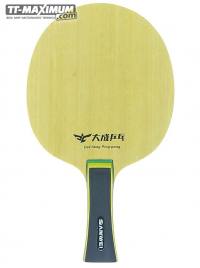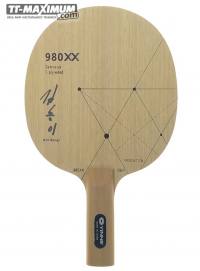Автор - Andrew Gooding
Источник - http://www.tt-maximum.com/gourl.php?http://www.pipfacts.info/content/view/25/41/
Перевод на русский - здесь
A lot of people wonder if they should play with short pips. Before I discuss this question, let me give a little background on myself. I began playing as a shakehander, but soon switched to penhold style, initially as a single-sided Japanese/Korean-style player with inverted and more recently as a Chinese style penholder with short pips on the forehand and inverted on the backhand. Since I switched to short pips my consistency has gone up and the quicker style and shorter stroke feels more natural, but they aren’t for everyone. Keep in mind that I switched from inverted rubber and someone who is going from long/medium pips to short pips may need other adjustments.
I see people who are considering switching to short pips as falling into one of two camps. The first camp are those who are trying to cover up a weakness in reading spin and think short pips is an easy way to return serve. For this first group I don’t think short pips are a very good option as short pips still react to spin and misreading say topspin to underspin will still lead to a pop up and easy kill. Short pips take a good deal of concerted effort to play well and shouldn’t be seen as an easy way out. They have strengths, but also some weaknesses.
The second group of those thinking of switching to short pips are those who smash rather than loop to finish the point and base their game on quickness rather than on spin. They will generally block in defense rather than backing away from the table and topspinning the ball. They will look for opportunities to add to their opponent’s spin, rather than simply cancelling it. Hitters, quick close to the table players and hardbat players are good candidates for short pips.
The number one thing short pips are good at is hitting through spin. Take advantage of this by setting up and preparing for high balls which you should hit straight through with only enough topspin to keep them on the table. Always be ready for the high ball and keep in mind that with good timing and footwork as the ball doesn’t have to be that high for a winning shot.
The second thing short pips are good at is blocking as they are less affected by incoming spin. If you block with short pips you’ll need to open your bat (compared with inverted) and push forward. The ball will come back very flat and you can vary spin as well, putting sidespin or underspin as well as topspin. The best two blockers in the U.S. both use short pips, David Zhuang many-time U.S. champion and Gao Jun #11 in the world. He Zhi Wen, a 43 year old short pips penhold blocker eliminated defending World Champion Werner Schlager in 2005.
A third thing short pips are good at is serve return. However, if you try to use short pips like either long pips or inverted you’ll be disappointed. Short pips are affected by incoming spin, so you can’t just stick your paddle out there (as with some long pips) to return the ball. You’ll need to be more active. Conversely if you try to cancel the incoming spin (pushing a push as with inverted) that will give your opponent a relatively spinless ball that may be easy pickings.
With this in mind, what short pips are good at is adding to spin, so you should use this ability in your service return. Instead of pushing underspin, try flipping it. If the serve is long enough you can loop the ball by combining your stroke with the incoming underspin resulting in a surprisingly spinny ball. With sidespin, instead of simply canceling the spin, try adding to it and send back the spin for your opponent to then try to deal with.
So to sum up what short pips are good at: Hitting through spin, blocking and adding to spin. What short pips aren’t so good at are generating spin, so you’ll need to change your strokes and your position from the table to minimize this weakness. Strokes should use a more open racket face and be more forward. Instead of looping low balls you’ll need to roll them over the net with an open racket face, so it’s better to catch balls at the top of the bounce and smash them. So you can’t be lazy with your feet at getting into the right position.
Serves will take some time compared with inverted, but with practice you can generate lots of spin with short pips. Just watch the former World Champion Liu Guoliang who many have called the best server ever. Keep in mind though that variation will get you more points than heavy spin alone and your goal should be to force a weak ball to follow up on versus an error.
Different types of short pips will be better and worse at generating spin. Very spinny pips, like Joola Tango Ultra, Friendship 802-40, Globe 889-2, Butterfly Raystorm, Stiga Clippa and Nittaku Hammond FA act almost like inverted, particularly when they are speedglued. A special category of these are what I call “sticky pips” which can provide a great deal of spin over the table, including Andro Revolution COR, Stiga Radical and Dawei 388. However these will also react more to spin.
Other short pips like Friendship 799, Butterfly Speedy P.O. and TSP Spectol have smaller pips optimized for hitting through spin, blocking and adding to spin and will be less forgiving of “inverted-type” strokes. They do give a flatter ball and more spin variation than the first group. Some short pips are narrow, hard and stiff, and and act almost like medium pips, with some spin returning properties like Double Happiness 651, Spintech Stealth and Andro Logo.
Whichever pips you choose, keep in mind Wang Tao’s suggestion to get the softest sponge possible. It will ease the transition from inverted rubber greatly. 1.5-1.8 are standard sponge thicknesses for short pips, anything more than 2.0 is overkill and will hinder your blocking more than help your spin and speed. Blade speed plays a bigger role than sponge thickness with short pips. Most players will use a harder and faster blades, either a 7 ply wood or a carbon blade.
If you live to loop winners 10 feet behind the table and bend them around the net with vicious sidespin, don’t even bother with short pips as you’ll never be able to do this effectively. Likewise if you want vicious spin on your serves and pushes, short pips aren’t the way to go. Of course if you play short pips on one side you’ll retain those options on the other one. If you like the speed, rather than the spin game short pips are worth a try. They will take some time and effort to play with effectively, so don’t look at them as a “quick fix” but for me they’ve made my game both more effective and more fun to play. And in the end, that’s what counts, isn’t it?

